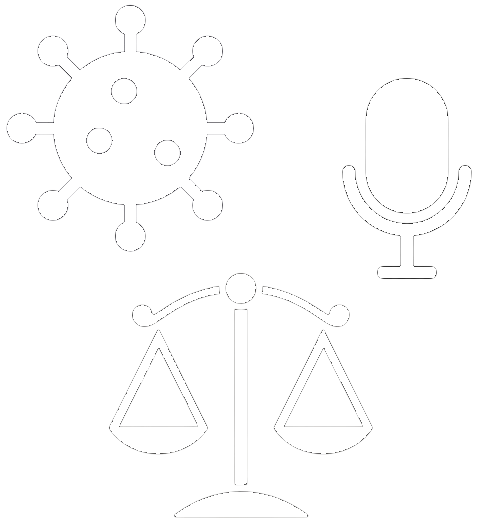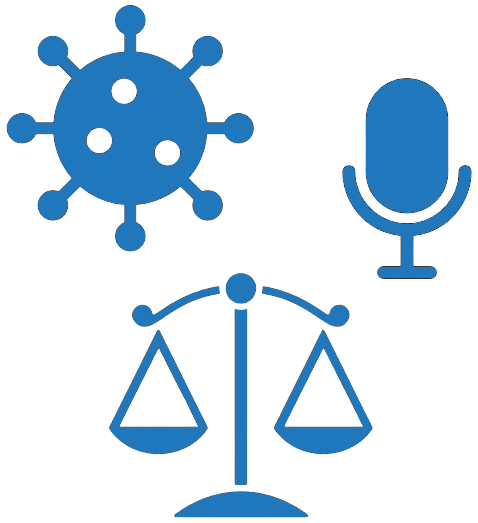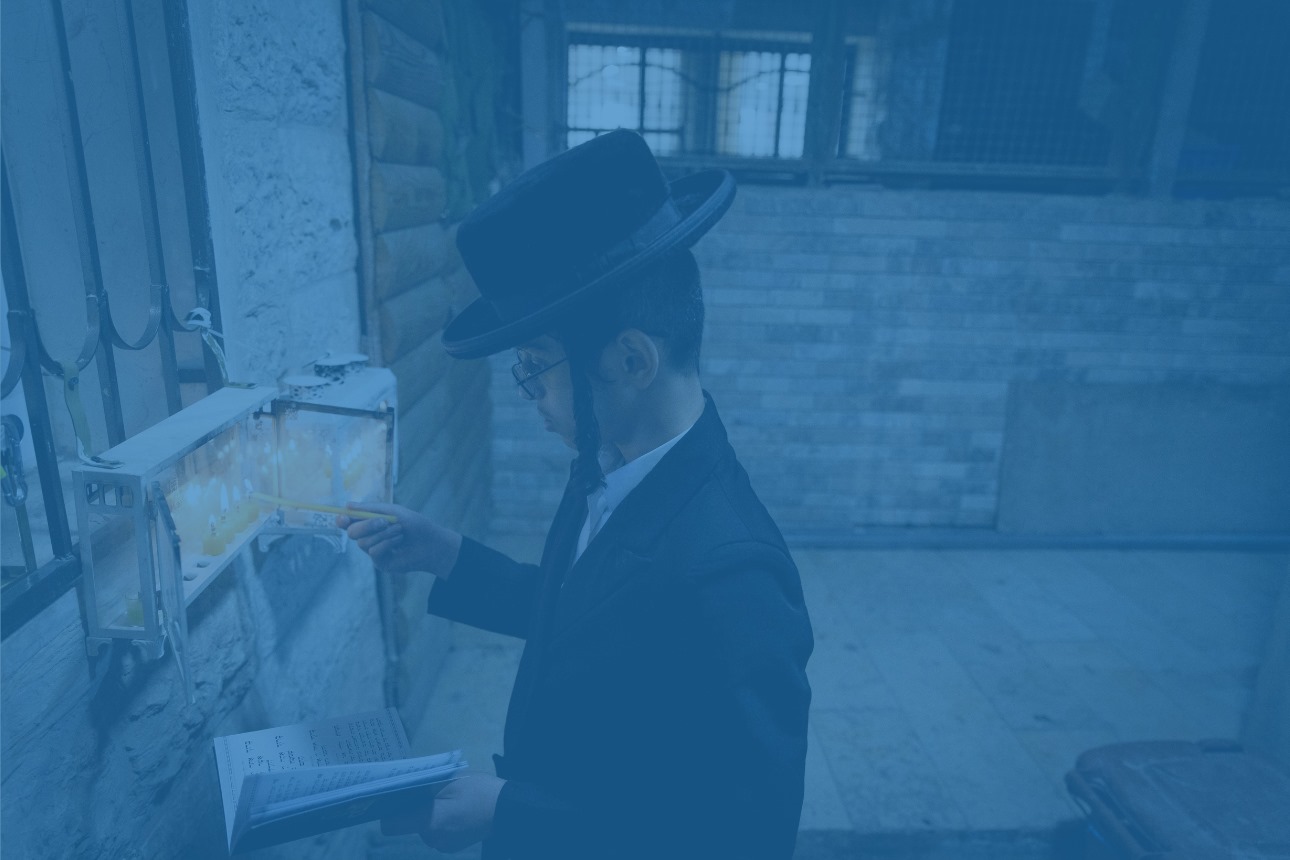Employment
Chap. 4
One of the main topics of public debate regarding the place of the ultra-Orthodox community in Israeli society, is employment. In 2002, around one-third of ultra- Orthodox men were employed, and just over half of ultra-Orthodox women. Between 2003 and 2015 there was a major surge in ultra-Orthodox employment rates for both men and women, resulting from a combination of economic need in the community and of public policy designed to promote entry of ultra-Orthodox Israelis to the labor market by various means. As a result, more than half of ultra- Orthodox men (53%) and more than three-quarters of ultra-Orthodox women (79.6%) are now employed. However, the rise in employment rates among men has come to a halt in recent years (2016–2022).
Employment rates, ages 25–66, by population group (%)
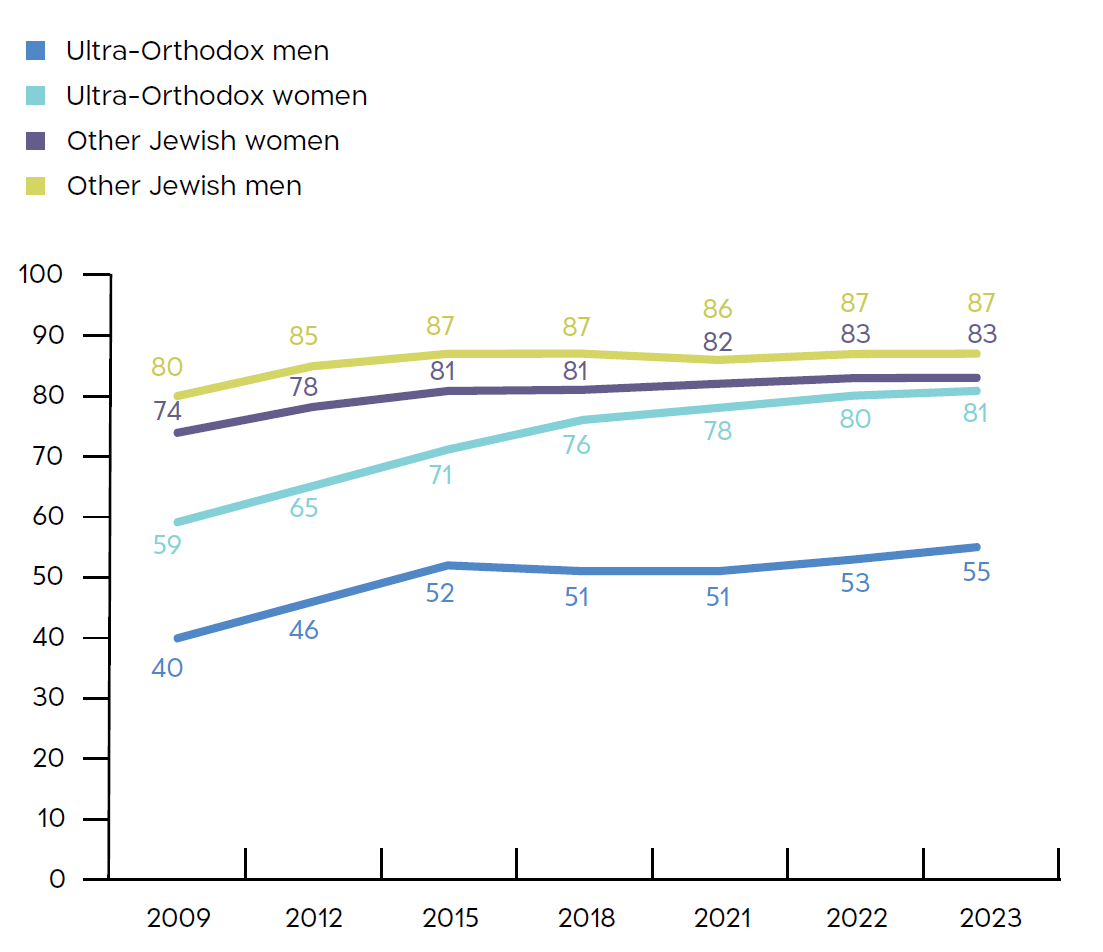
Analysis of data on the standard of living in the ultra-Orthodox public, reveals that the differences-as compared to the rest of the Jewish public in Israel- remain large, but have become somewhat smaller in recent years. This is true of income, poverty rates, consumption, and access to motor vehicles. The only area in which findings for the two populations are almost the same is home ownership.
Average gross monthly income from employment, ages 25–66, by population group (NIS)
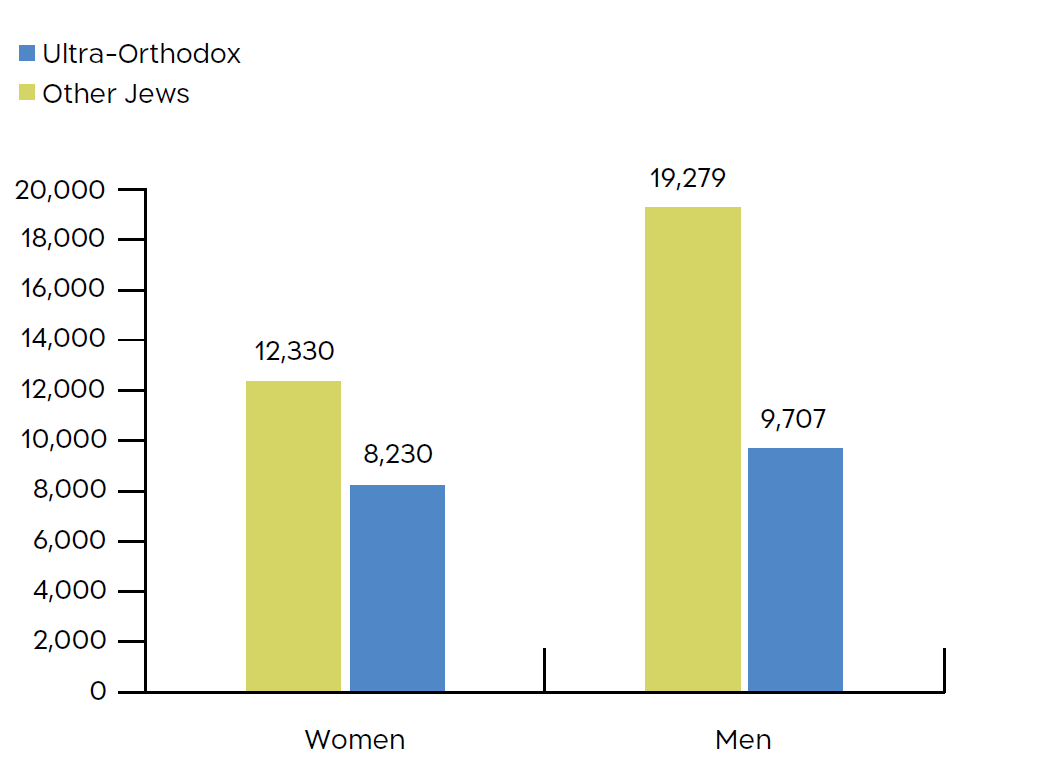
In the last eight years which we examined (2014–2022), we have not seen a trend towards narrowing the difference between the industries in which ultra- Orthodox men and women are employed and those in which other Jewish men and women work.









